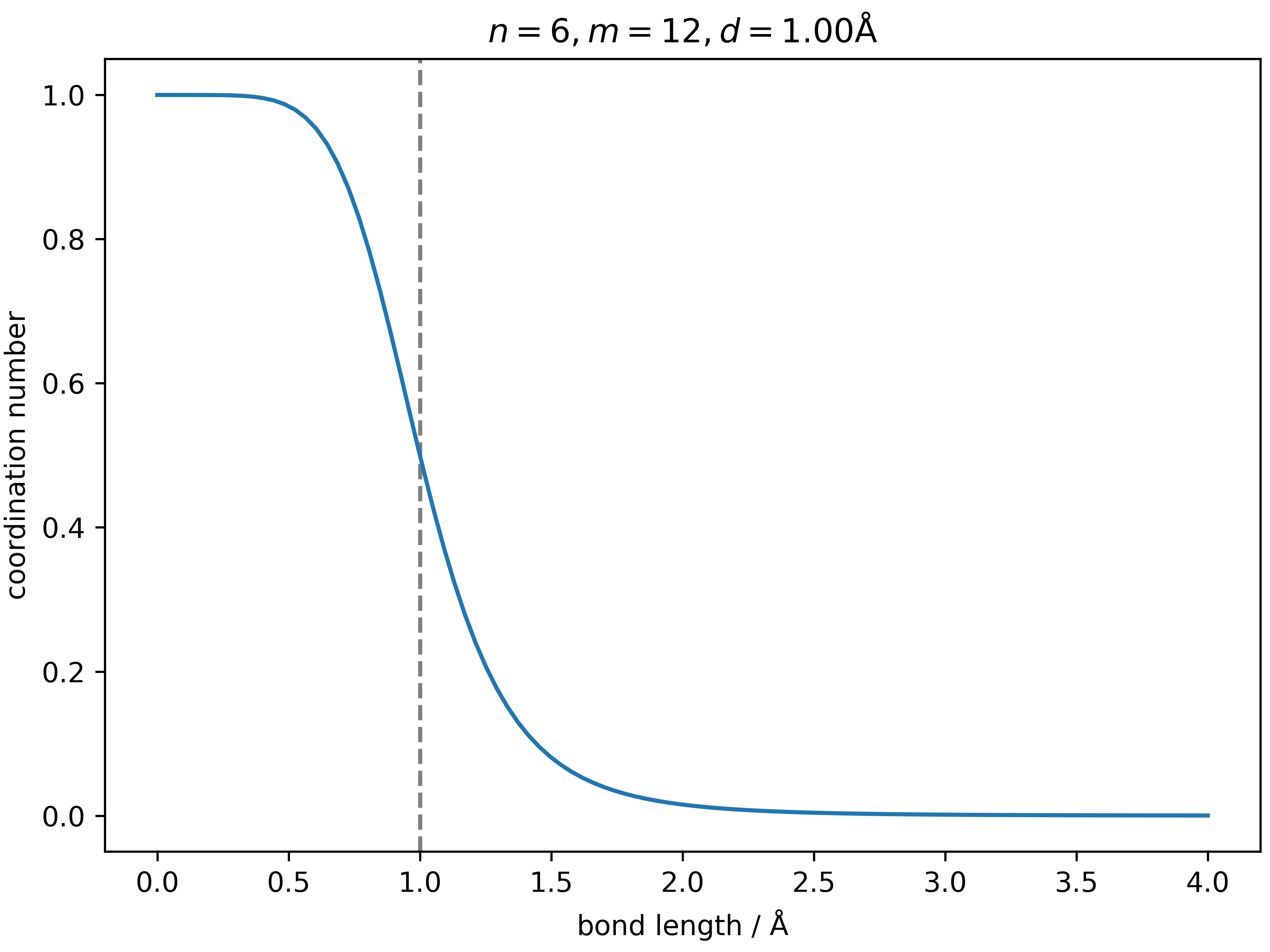Coordination number¶
The coordination number of an atom  with respect to a set of reference atoms
with respect to a set of reference atoms  is defined as
is defined as

with the exponents  . If only a single bond is taken into account,
. If only a single bond is taken into account,  takes values close to 1, if
takes values close to 1, if  and gets approximately zero, if
and gets approximately zero, if  . The threshold
. The threshold  therefore is a constant that can be diferent for every pair of atoms.
therefore is a constant that can be diferent for every pair of atoms.
The use of the coordination number is invoked by the following block in the meta-config.json file:
"collective variables": [
{
"type": "bond",
"name": "bond length between two atoms",
"atom": i,
"reference": [k, l, m, ...],
"n": 6,
"m": 12,
"d": "auto"
},
...
]
If "d": "auto", the distance thresholds are determined for each pair of atoms as the sum of their covalent radii. Other possibilities are to provide a single float number "d": d_0 that is used for all pairs or a list of floats corresponding to all pairs of atom  and reference atoms
and reference atoms 
"d": [d_ik, d_il, d_im, ...].
The choice of parameters can be checked by running the check_cn_parameters() function from the metafalcon.cvs.cvfunctions
module:
from metafalcon.cvs.cvfunctions import check_cn_parameters
check_cn_parameters(n=6, m=12, d=1.0)
A file cv_parameters.png will be saved that looks like the following and allows for the critical evaluation of the parameters.
